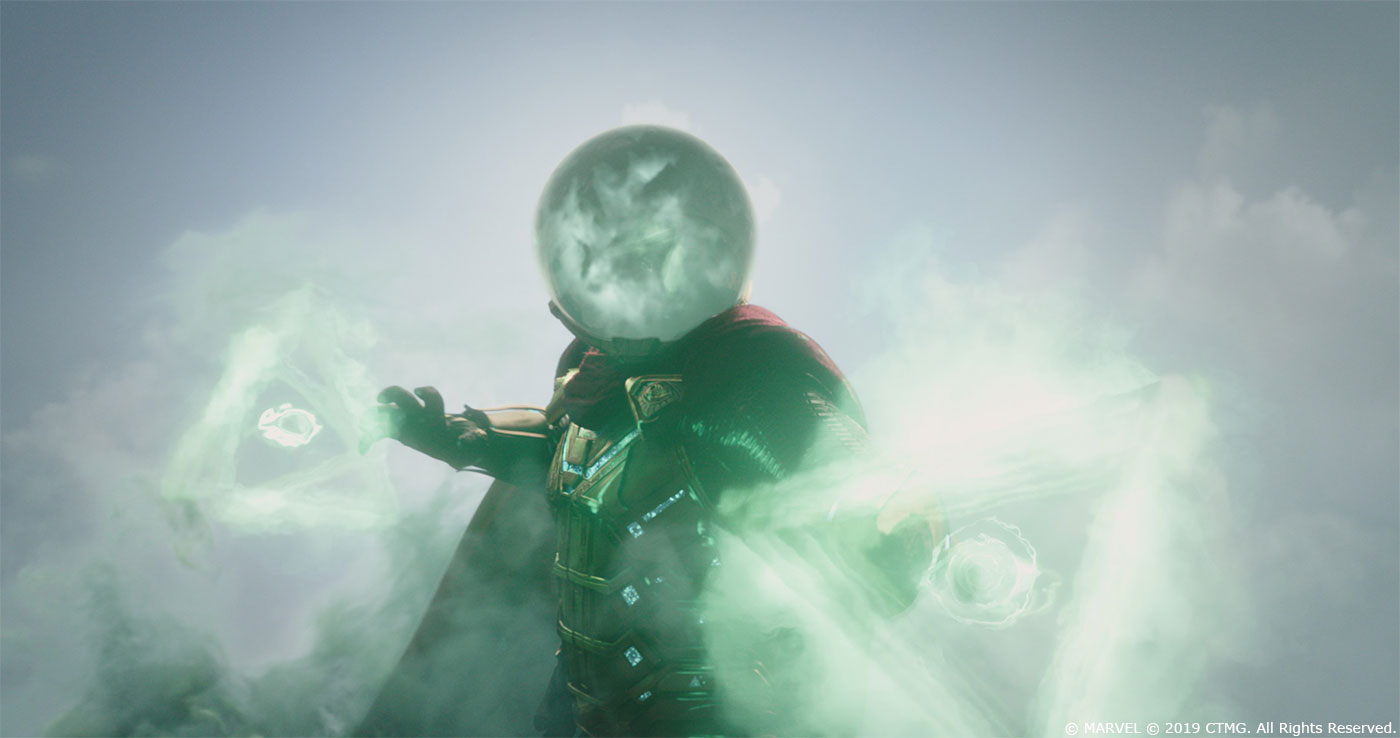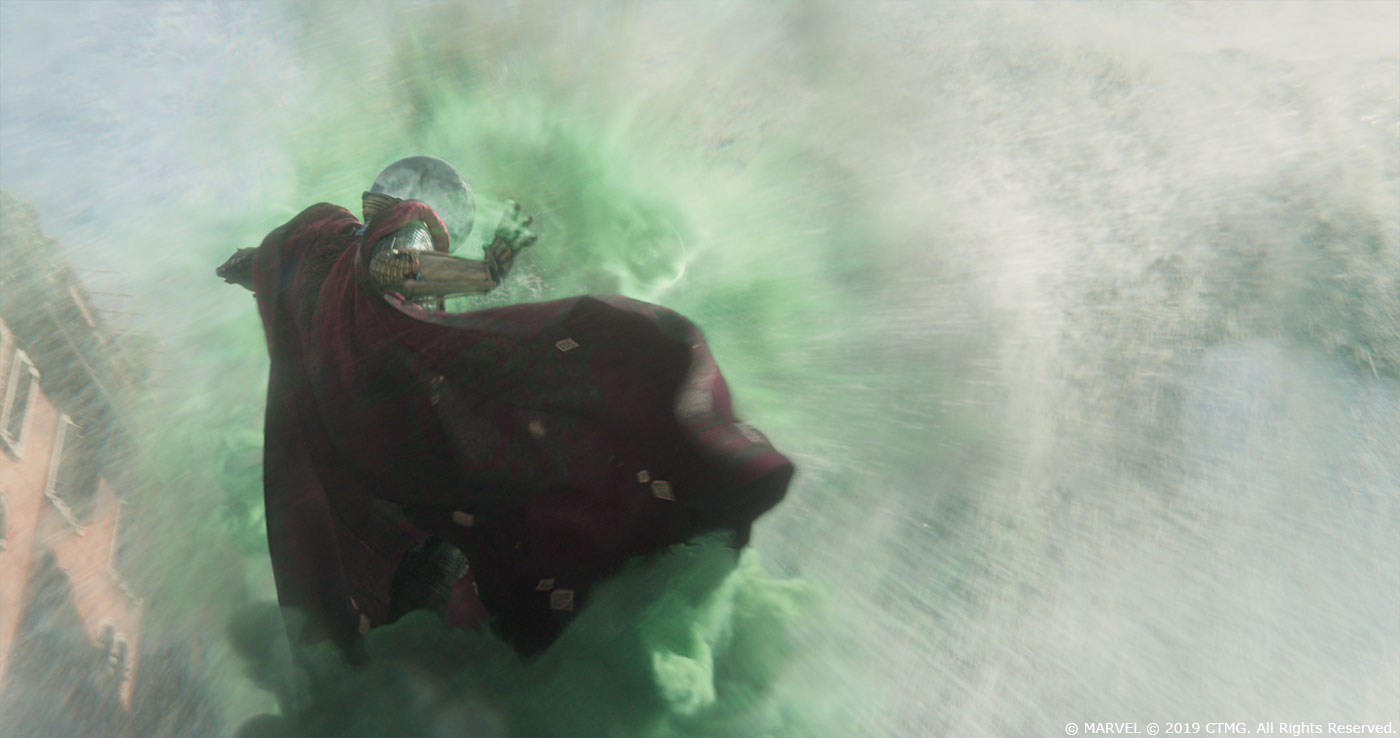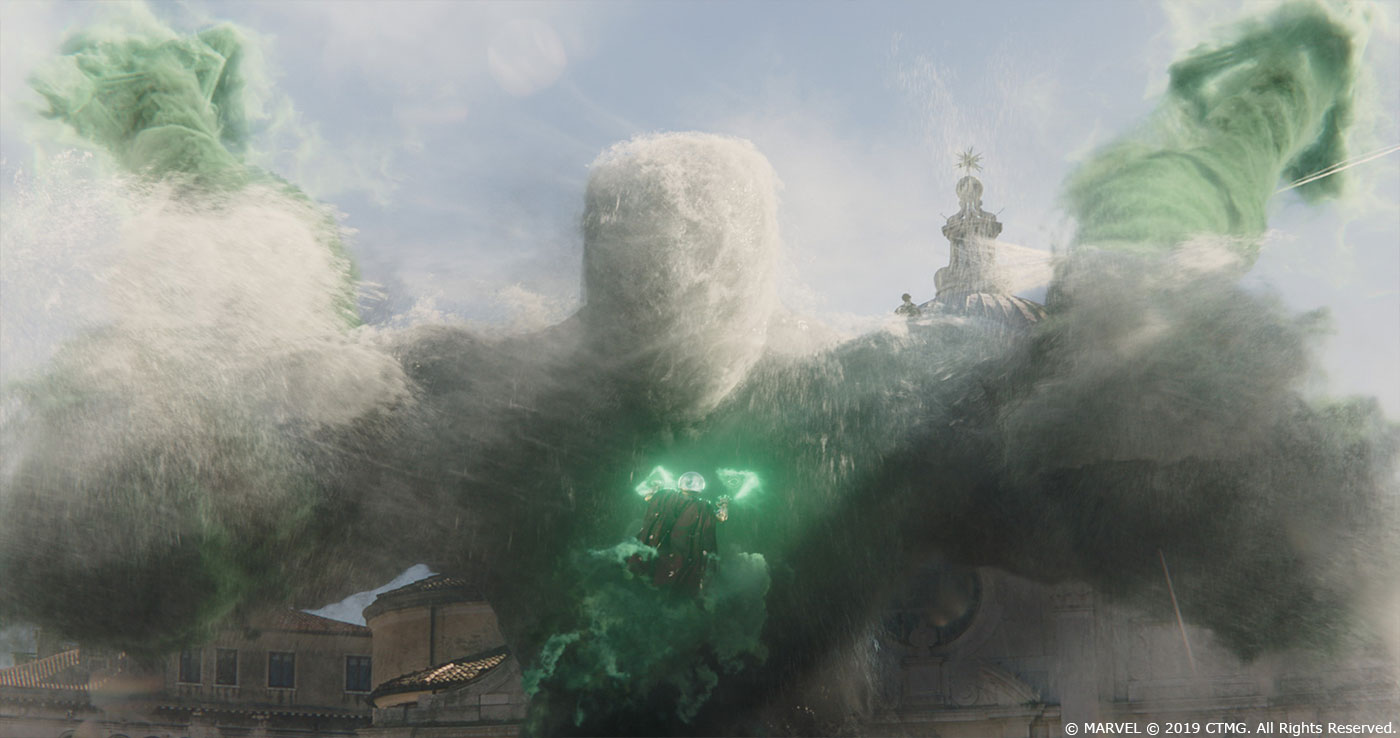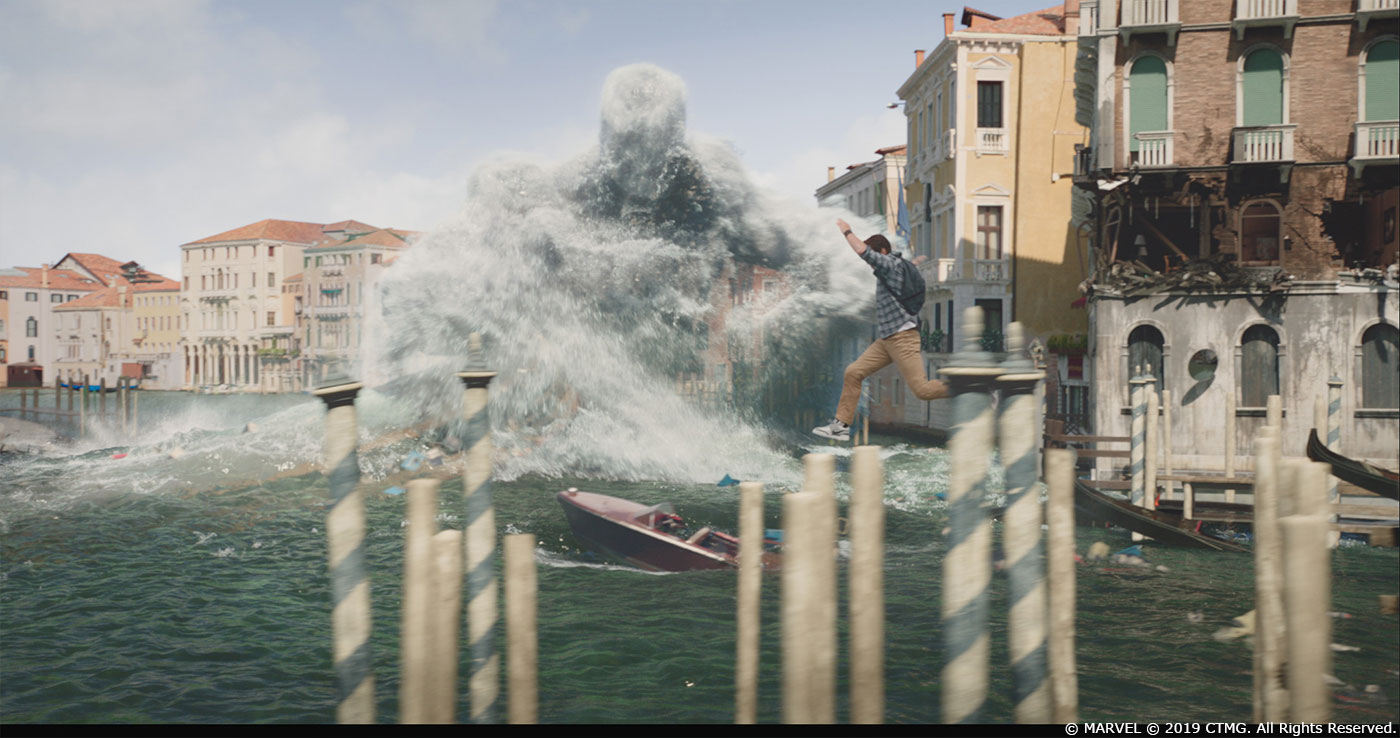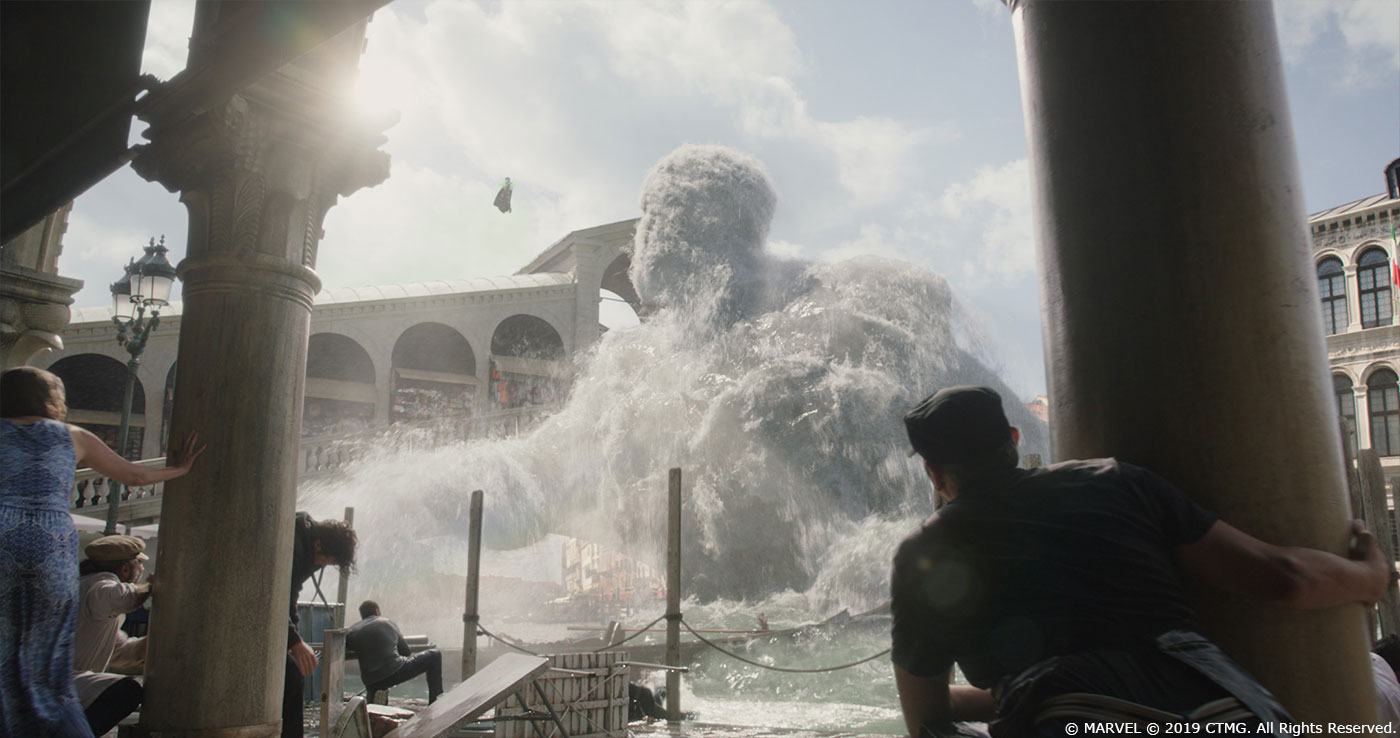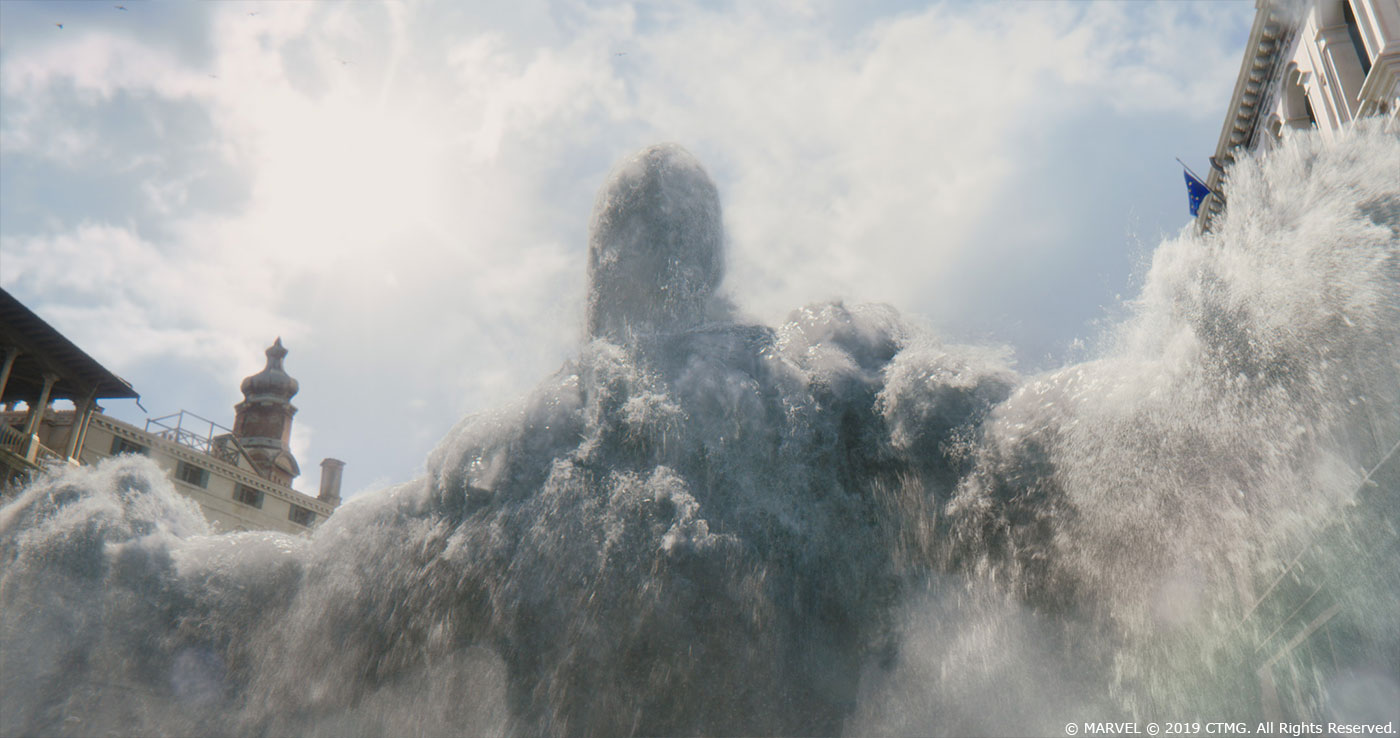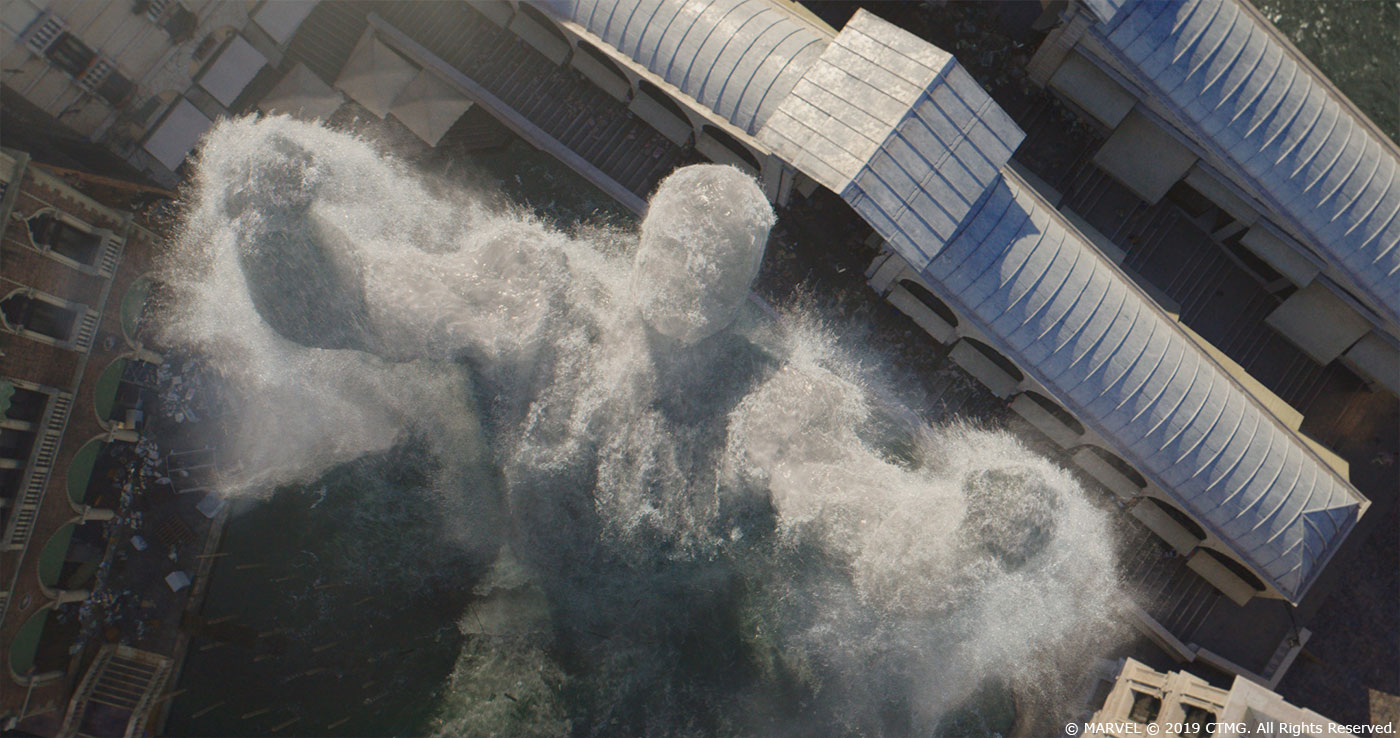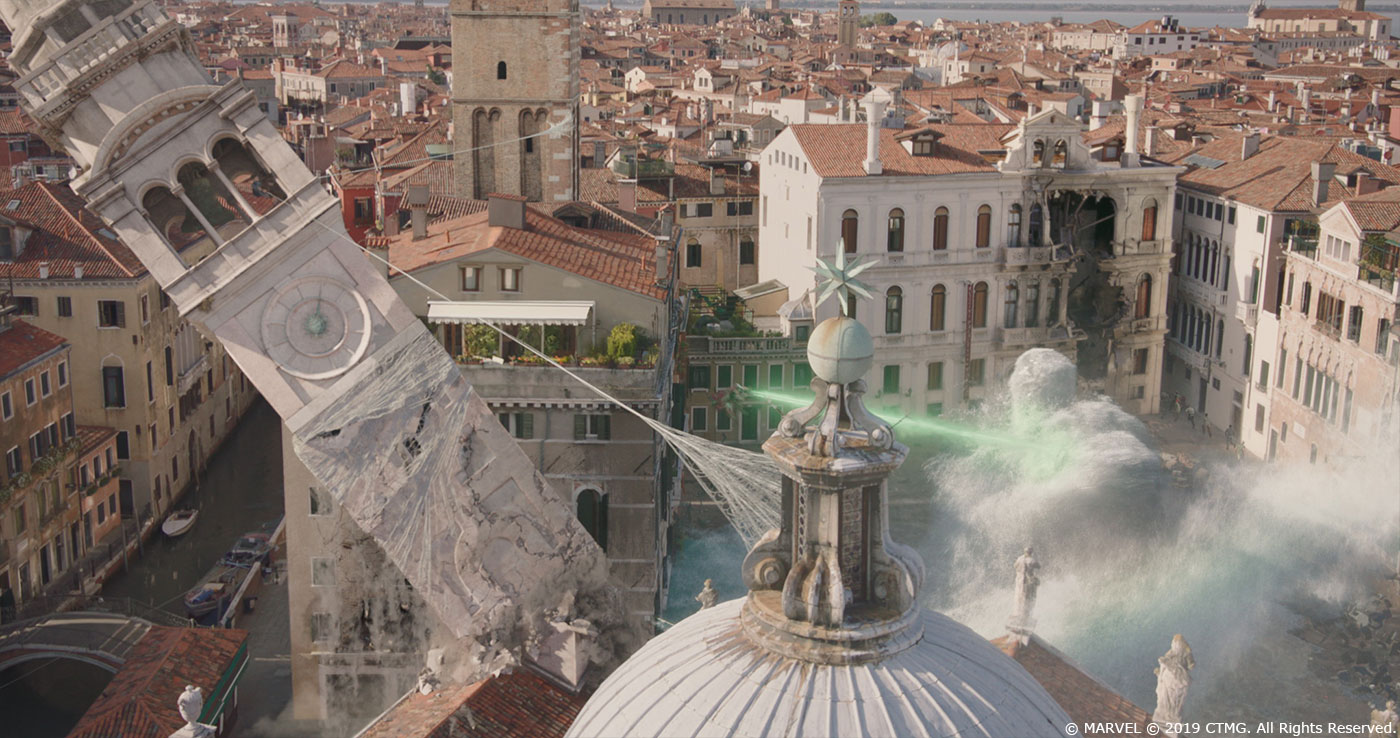Julius Lechner began his career in visual effects a decade ago. He has worked in many studios such as Pixomondo, Industrial Light & Magic and Scanline VFX. He has worked on many films like IRON MAN 3, TEENAGE MUTANT NINJA TURTLES, JUSTICE LEAGUE and AQUAMAN.
What is your background?
After studying Multimedia Technology and Design as well as Multi Media Art, I started my career as a 3D generalist but soon changed my focus to FX simulations because I of how much I enjoy its mix of technical and creative challenges. Over the years I was able to expand my skills and worked as FX Supervisor, CG Supervisor and DFX Supervisor for Scanline. This was my first show in the role of a VFX Supervisor.
How did you and Scanline VFX get involved on this show?
Scanline is well known for its water simulation using Flowline, our proprietary fluid simulation software. So creating a fully simulated character made out of water sounded really exciting and very fitting. We had done something similar with the River God on THE CHRONICLES OF NARNIA: PRINCE CASPIAN before in 2008, but in the last ten years Flowline had evolved quite a bit and so did obviously the machines we use for simulation, which allowed us to do Hydroman in a very different way and a lot of detail. I personally got involved on the show around June 2018, but we started doing the first developments for Hydroman already in March. Even those first versions sparked a lot of excitement among the team, as it was something unique but at the same time something that we felt we can really excel at.
What was your feeling to be part of a Spider-Man movie?
It was great! I remember well how I admired the Birth of Sandman sequence in SPIDER-MAN 3 and I enjoyed HOMECOMING a lot, so being able to continue this legacy and work on a movie with such an iconic character was very exciting.
How was the collaboration with director Jon Watts and Overall VFX Supervisor Janek Sirrs?
Our main point of contact was Janek together with VFX Producer Cyndi Ochs and it was truly a great collaborative and enjoyable experience for us. Right from the beginning they included us into the creative process which was quite fun. For Hydroman’s demise, for example, we were completely free in pitching our own ideas about how he could eventually die. We came up with a long list of crazy ideas internally and then proposed doing these green tendrils coming out of inter-dimensional portals in the sky, because we thought it was a nice combination of using Mysterio’s signature green smoke and him pretending to be from another version of Earth. Since Mysterio could control the tendrils, it allowed us to have the two opponents wrestle closely with each other without any actual physical contact, which we thought was something interesting and new. It was really well received when we first presented it. Janek then finessed it further and added his idea of Hydroman being torn apart and I think we really ended up with a unique and cool way of him to die.
During the whole show we always stayed in close contact with Cyndi and Janek. Janek’s notes are incredibly detailed and he always explains in great accuracy what he wants to see. Cyndi always kept us really well informed and during the whole production we felt included and as part of a big team, working on something great.
What were their expectations and approach about the visual effects?
Janek has an incredible sense of realism and does not want to cut back on quality. When it comes to Hydroman he wanted to have him look as real as possible. Obviously we are talking about a huge water monster but in terms of the quality of the water simulations themselves he didn’t want to make compromises. Our simulations ended up having so much detail that each water droplet was as small as it would be in real life, which ends up being massive amounts of data to be dealt with. Knowing that, Janek always wanted to make sure that each shot works well in every aspect before we even went on to simulate Hydroman and this approach paid off very well.
How did you organize the work with your VFX Producer?
With Lisa Spence I was lucky to have a very experienced and excellent producer on my side and I wouldn’t have wished for anyone else. She always made sure we’re on track, focus on what’s important throughout the whole show, while keeping the grand scheme in mind, and was the source of the great team spirit we had. Her levelheadedness was like a rock for our team during the busy phases of production. We had a core group that met for an overall show catchup every day to make sure everyone in the team is on the same page and information gets delegated quickly. The organization of the project itself in terms of which dailies we had changed over time, driven by the different phases we were in. Coming from a simulation background myself, I was quite involved in the CG side of things and, based on our individual strengths, split the 3D departments with our CG Supervisor Ioan Boieru, who I could always rely on to produce great looking pixels. Our comp department, spearheaded by Compositing Supervisor Adam Balentine and Compositing Lead Curtis Carlson did an incredible job making all these highly complex shots look amazing and Animation Supervisor Mattias Brunosson together with his team went above and beyond in making our characters come to life.
How did you split the work amongst the Scanline VFX offices?
The team was split between Vancouver and Los Angeles with the majority of the team being in Canada. All of our servers and workstations are in a single location which allows us to work on the same network via PCOIP, so no data has to be transferred between the different offices. Another unique thing that helps tie the teams together are our video conference rooms, plastered with screens, that allow us to see each other eye to eye in life size. It almost gives you the feeling of being in the same room together.
What are the sequences made by Scanline VFX?
Our main sequences were the prologue in Mexico and the Hydroman sequence in Venice.
Can you explain in detail about the design and creation of Mysterio?
The costume itself was already designed when we got involved in the show but we had the honor and the fun task to develop his fishbowl helmet and his signature smoke effects. We created various design studies of which direction we wanted to take Mysterio as well as his effects and also worked together with production’s design department in that regard. The final design stays true to the comics in a lot of ways. The basic idea for the behavior of his helmet smoke were pyroclastic clouds, always evolving and collapsing back into the center.
Can you tell us more about the animation challenges when he is flying?
The main aspect we had to figure out about his flying was the underlying logic of it. Since it’s all just an illusion, he can’t actually fly. So the question was if he can fly because of his own powers, like for example Superman would, or if it is his suit that gives him the ability. Keeping his background as Stark employee in mind, we decided to have him behave in a similar fashion as Iron Man during flight, using his arms and legs to balance himself.
How did you handle his cape animation?
Our experience on previous films helped us greatly in simulating and art directing his cape. The setup used by our CFX team, led by Kishore Singh, uses a two step simulation process. As a first step the artists can use a simplified version of the cape, that runs almost real time and is very interactive. It allows the user to quickly define the overall motion of the cape. The second step simulates a high resolution cloth simulation that will try to emulate that motion but will always feel natural.
How did you design and create his superpowers?
Designing his superpowers was a lot of fun. We wanted to keep the spirit of his comic book appearances as much as we could. One interesting aspect was his signature green smoke. In the comics it is often displayed as defined strands of smoke, rising from a more diffuse cloud and circling around him. This gave us a few challenges: Controlling the smoke along these strands while still behaving naturally, figuring out how to create a continuous cycle without showing where the smoke actually comes from and finding a good way to have the smoke strands forming and dissolving over time. When it comes to his blasters we wanted to have something smoke based that is also bright, almost like plasma, and incorporate the triangle symbols that appear around his hand. The symbols themselves were smoke simulations based on two triangles spinning in opposite ways. The blasters also used spinning triangles shooting forward as a base for the simulation with an additional bright core combined with short, shotgun like firing times, to make it feel powerful.
Mysterio is fighting a water Elemental. How did you work with the art department for his design?
We received concept art for Hydroman early in the project which gave us a good idea about what he should be. Since he is so heavily simulation driven, a lot of the design process and look development was done by our Flowline water simulation team, led by David Stopford and Tzung-Da Tsai, with the support of Scanline President Stephan Trojansky. For his body we wanted to make him feel like a churned up river that you would go rafting on, with the water being aerated and white. For his overall scale and spray behavior Janek wanted us to reference the large water cannons used to dampen the acoustic vibrations of rocket launches. A lot of his look was developed over time, like the amount of spray and mist, how well the water should define his shape and if he should have a face or not. Janek wanted to keep him ambiguous but still recognizable as a human shape and it was always a fine balance to keep him readable but still have the water do exciting things.
Can you explain in detail about his creation?
We had to create a number of new features and behaviors which all played a part in his evolution. Often when we couldn’t achieve a certain aspect of his look, we had to write new simulation logics for the artists. It is quite a fun process because suddenly you are able to do amazing things that just a week ago seemed impossible. His basic logic is that he attracts the water around him in the shape of a vortex, which forms his shape as it goes higher and goes back into the canal on his inside. To achieve that we used an underlying mesh to guide the water through space, although it never actually interacts with this geometry. The mesh really acts more as a source of information for the simulation and can carry a multitude of parameters that can be driven by the artist with texture maps. This approach gave us an immense amount of control about the simulation, to leave as little as possible to chance.
As he is made of water, how did you manage the challenge of his rigging and animation?
Using the mentioned mesh as a base for his simulations allowed us to do treat his animation rig almost like a traditional character. You can imagine this underlying shape as a biped, but instead of having legs he would have a kind of skirt which softly blended from his hips into the surrounding water. Rigging-wise this skirt is the only difference from a regular biped rig. Since our simulation setup was very stable, our animation team was fairly unrestricted in how to animate Hydroman. There were specific cases, like his initial forming or him conjuring additional versions of himself, where there were some pitfalls but overall it was a very smooth workflow.
Can you explain in detail about the creation and animation of the various water simulations?
Hydroman’s simulation setup is divided into a number of different simulations which has the benefit of being able to work on just the part that needs tweaking without having to run all the other expensive parts of the setup. A typical Hydroman simulation was running these interdependent simulations on 30+ machines simultaneously. For simplicity’s sake we could say it consists of three main parts: Base water, spray and mist. The main technical challenge was to have the water follow his body shape while still behaving naturally. So the simulation always has to be aware of its relative position to Hydroman’s body. Initially our approach was fully based on forces which turned out to be not very controllable, especially when he was moving fast. You can imagine the final setup almost as a flat simulation wrapped to his body with the ability to react to his motion and release the water based on a variety of conditions. The same basic logic also applied to his spray since it would fall back to the water surface as it gets generated. Only when it was far away enough or when Hydroman was moving a lot it would get released and behave like a regular simulation. We also completely reworked our approach for our mist simulations. Usually fine mist gets simulated as a soft atmospheric, comparable to smoke or steam. In our new approach it was actually millions of very fine particles which, when seen from far away, look like soft mist but are recognizable as individual points when viewed from a close distance. Not only is that more accurate to real life, but it also looked better and gave us the ability to fly directly through a cloud of mist without losing detail.
How did you create the various locations of Venice?
We had three main locations throughout the Venice sequence. The first one around the Rialto bridge is actually different from the real location. In the movie you can see MJ and Peter walking along a fish market with a little bridge but in real Venice there is a big (and quite famous) shopping center. The movie version was a set piece built in Leavesden, UK, and was done so accurately, that it fit perfectly into the real environment. Most of the shots with the cast were shot there and we replaced the background and extended the set pieces. But with Hydroman causing damage to pretty much every building in that area and to give us the freedom to create any camera angle we needed, we also had to create a fully digital version of everything. In many shots what you see in the final image is digital buildings with projections for the far background.
The second location, when Hydroman is dragging himself through the narrow canals and Peter swings through the collapsing building, was for most shots also a combination of projections and fully digital buildings.
Finally, for the showdown between Hydroman and Mysterio on the plaza we had to completely replace the tower that Peter is in and partially replace surrounding buildings and debris.
The city is suffering many destructions. Can you elaborate about this aspect?
As mentioned previously the set in Leavesden was built with great accuracy based on a Lidar scan of the original location. This gave us a good base to create one coherent digital version of it, merging the two locations together. To be prepared for any eventuality when it comes to destroying the buildings around the Rialto bridge, each of them was built with full interior and furniture to allow us to be free in our decisions on what to damage. The FX team, led by Hannes Krieger, handled the destruction within Thinking Particles and Flowline.
How did you work with the SFX teams for those destructions?
I think it is always nice to have good plates with real SFX elements as a base that the VFX then can enhance. We had quite a few shots from the shoot in Leavesden where real water was being used or parts of the set were being destroyed. We then combined it with additional water and digital destructions, for example the destruction of the small bridge when Hydroman punches through it or when Peter gets hit by Hydroman’s fist on top of the Rialto bridge.
Which sequence or shot was the most challenging?
The sequence as a whole was challenging but always fun to work on. If I had to single out one shot I would say it’s when Mysterio circles around Hydroman at the bridge while firing at him. Since it was part of the first trailer it had to come together very quickly while still being early in the show, but it also had to look good since it was the first time the world got to see Hydroman.
Is there something specific that gives you some really short nights?
There are always things that you need to worry about but having the team we had, I could always be confident in what we do.
What is your favorite shot or sequence?
Our team created so many amazing shots that it’s hard for me to pick a specific one. I like the sequence as a whole and I could watch it over and over again.
What is your best memory on this show?
Really the whole show itself is a great memory for me. It was very special for me personally in multiple ways, the shoot in Venice was a unique experience, our work was as fun as it was challenging and we had an amazing team and a great client. It will always be something to look back to.
How long have you worked on this show?
About 12 months.
What’s the VFX shots count?
Roughly 200 shots.
What was the size of your team?
Approximately 150 people.
What is your next project?
We’re bidding several possible projects, but I can’t say more than that at this time.
What are the four movies that gave you the passion for cinema?
WILLOW, INDEPENDENCE DAY, THE MATRIX and THE LORD OF THE RINGS.
A big thanks for your time.
WANT TO KNOW MORE?
Scanline VFX: Official website of Scanline VFX.
© Vincent Frei – The Art of VFX – 2019


